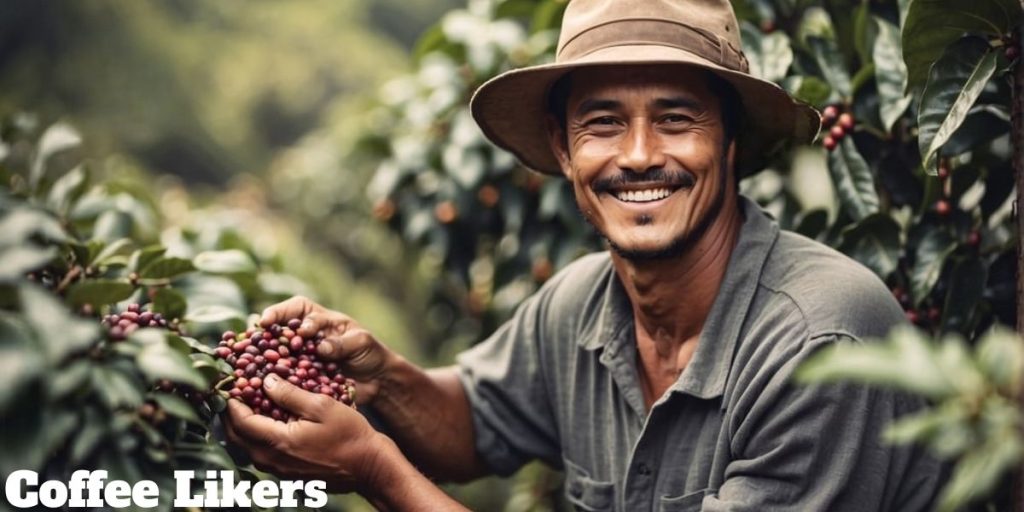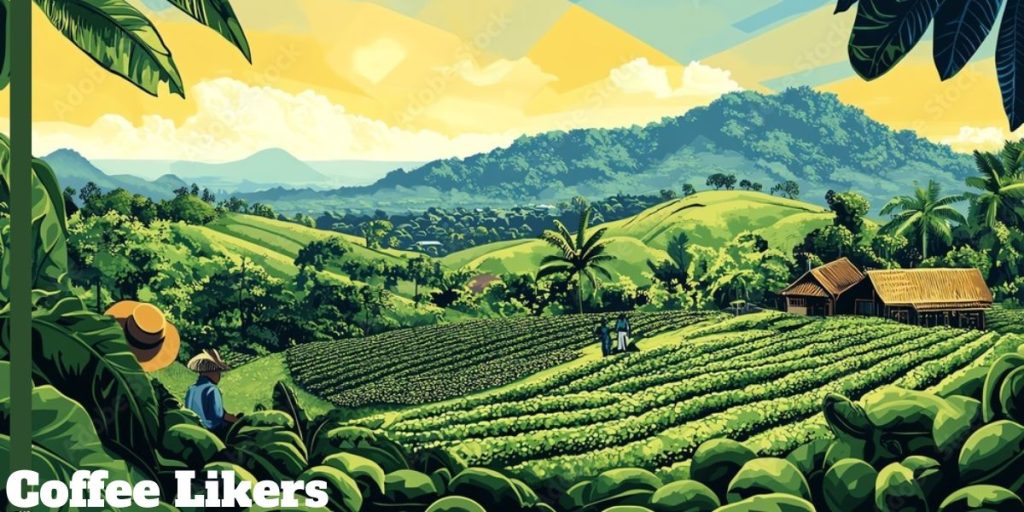When many people think of coffee, they might not think of “robusta” right away. The coffee world mainly focuses on Arabica coffee plants. However, robusta beans from the Coffea robusta plant are very important in global coffee production.
This article explores the details of robusta coffee. We will look at its characteristics, how it is grown, and why it is important today. We will also compare it to other types of coffee and discuss its potential role in the future of coffee.
Robusta coffee is known for its strong taste and higher caffeine content compared to Arabica beans. It is also more resistant to pests and diseases, making it a popular choice for large-scale coffee production.
In this article, we will take a closer look at how robusta beans are grown and processed, as well as their impact on the coffee industry.
What are the key characteristics of the Coffea robusta plant? Coffea robusta plants have lots of caffeine, which helps them fight off bugs and sickness better than Arabica plants. They taste strong and rough, with a full body, and are often used in espresso blends to make the crema.
Coffea Robusta Plant: Brief Description
The Coffea robusta plant, also known as robusta, is a type of coffee that comes from Central and Western Africa. Robusta is tough and can survive harsh conditions that other types of coffee, like Arabica, cannot.
It thrives in warm climates and at lower elevations, which is important for the coffee industry. Robusta is also known for its strong flavor, with many people describing it as bold and earthy. Additionally, it has more caffeine than arabica.
Robusta Coffee Plant
The Coffea canephora, also known as the robusta coffee plant, demonstrates the power of nature. Its strength is evident when it thrives in places where other coffee plants, like the delicate arabica, struggle. This strong nature makes it crucial for coffee farming worldwide.
The robusta coffee plant originates from Central and Western Africa. It can withstand various weather conditions, tolerating high heat and humidity.
It thrives best in lower areas, which is ideal for large-scale coffee production. Its ability to adapt has enabled its widespread growth in countries across Africa, Asia, and South America.
Robusta Coffee Beans
Robusta beans have a unique taste. People often say they taste strong, bold, and earthy. This strong taste comes from their chemical makeup.
Their caffeine content is about double that of Arabica beans. This higher caffeine level makes the taste more bitter, which many coffee lovers enjoy, especially in blends.
Because of their bold taste, robusta beans are popular in many coffee products. They are often used in espresso blends.
Their strong taste and rich crema make each cup fuller and richer. Also, robusta beans are important in instant coffee. They are affordable and create a strong brew.
Robusta Coffee Plantation
Robusta coffee farms demonstrate how farming can be successful. Robusta coffee plants thrive at lower altitudes and can tolerate various climates. This adaptability allows them to be cultivated in numerous locations, making robusta crucial for coffee production worldwide.
The majority of robusta plantations are located in warm and humid countries with lower elevations. These regions are ideal for cultivating robusta beans.
They require consistent rainfall and warm temperatures. As a result, robusta can be cultivated extensively, ensuring a consistent supply for the global coffee industry.

Robusta Coffee Origin Country
Robusta coffee comes from the tropical rainforests in Central and Western Africa.
The Ivory Coast, the Belgian Congo, and Uganda are places where this strong coffee species began.
From Africa, robusta coffee is growing and spreading to other parts of the world.
Southeast Asia, especially Vietnam, is now a key player in making robusta coffee. Vietnam offers cheaper labor prices and a pleasant atmosphere.
This has helped it become the largest producer of robusta beans in the world. The growth of robusta coffee in Vietnam shows how adaptable the coffee plant can be.
Benefits And Drawbacks Of Cultivating Coffea Robusta
Growing Coffea robusta has good and bad sides for coffee farmers. Robusta is strong, can resist diseases, and produces more beans, which is attractive.
It can grow well in hot areas and at lower altitudes, saving on production costs. Its higher caffeine content acts as a natural pest repellent, reducing losses.
However, robusta faces tough competition in a market that often prefers arabica. Its strong and sometimes harsh taste is not as popular as the sweeter arabica, leading to lower prices for robusta beans and affecting farmers’ income.
Despite these challenges, robusta is important for global coffee production. It offers a strong and flexible option compared to Arabica, especially with changing climates.
Contrasting Characteristics Of Coffea Robusta With Other Coffee Species
The world of coffee has many different types with unique traits. Coffea robusta isn’t as well-known as arabica, but it has a different taste and grows in a special way.
Arabica is well-known for its fragrant and sweet flavors. It’s the main choice for specialty coffee, but it can be affected by climate change.
On the other hand, robusta thrives in warm places and lower elevations. It’s more resistant to diseases and pests. Its higher caffeine levels give it a stronger and more bitter taste, which many enjoy in blends and espressos.
While arabica is famous for its rich flavors, robusta’s toughness and lower prices are important for coffee worldwide.

Environmental Preferences And Growing Conditions For Coffea Robusta
Coffea robusta can grow in many different places. It originally came from African rainforests, but now grows all over. Robusta likes warm and humid weather and can handle high temperatures.
It thrives in lower-altitude regions, mainly in tropical countries. It prefers well-drained soil that retains water. The best growth occurs in areas with temperatures between 75°F and 85°F (24°C – 29°C) and around 60 to 80 inches of rainfall each year.
Health Benefits Associated With Consuming Robusta Coffee
Among coffee enthusiasts, robusta coffee is a hot topic. It might offer certain health advantages, just like arabica coffee. Its high caffeine content—nearly twice that of arabica—is one advantage.
This means that robusta can really give you an energy boost. It can help you perform better both mentally and physically. Many people enjoy robusta because it helps them feel more awake, focused, and quick to react.
However, it’s important to drink it in moderation. The effects of caffeine vary from person to person. Drinking too much can cause feelings of restlessness, anxiety, and trouble sleeping.
There are also studies showing that the antioxidants in robusta might help reduce swelling and lower the risk of long-term illnesses. Always remember to drink coffee carefully and talk to a doctor if you have questions about your health.
Flavor Profile And Caffeine Content In Coffea Robusta Beans
Coffea robusta beans are well-known for their strong taste. Unlike the sweeter and lighter flavor of Arabica beans, robusta beans have a bold taste due to where and how they are grown, as well as their chemical composition.
Robusta beans contain more caffeine and chlorogenic acids, which makes them taste bitter.

Some people describe robusta as having an earthy, nutty, or chocolate-like flavor. Lower-quality beans, however, could taste scorched or rubbery.
With double the caffeine content of Arabica beans, robusta beans provide a bigger caffeine kick. This is why they are often preferred in espresso blends and for those looking for a stronger caffeine boost.
Economic Significance And Global Production Of Coffea Robusta
Coffea robusta plays a crucial role in the global coffee economy. Accounting for approximately 30-40% of worldwide coffee production, robusta is a significant income source for many developing countries.
Its resilience and ability to thrive in warmer climates make it an attractive crop, particularly in regions where Arabica cultivation faces challenges.
| Region | Production (60kg bags in millions) |
| Vietnam | 31.1 |
| Brazil | 17.5 |
| Indonesia | 9.5 |
| Uganda | 5.9 |
| India | 5.6 |
Countries like Vietnam, Brazil, and Indonesia dominate robusta production. Its affordability and versatility make it an essential ingredient in various coffee products, including instant coffee, espresso blends, and even some specialty roasts.
Sustainable Farming Practices For Coffea Robusta Cultivation
Sustainability is very important for growing Coffea robusta. It helps the coffee industry last longer and protects the environment. Sustainable farming tries to reduce its impact on nature while helping coffee farmers make a living.
A big part of this is growing robusta in the shade of bigger trees. This helps nature stay diverse and stops soil erosion. Also, using natural fertilizers and pest control methods instead of chemicals helps keep water clean and soil healthy.
Potential Challenges And Diseases Affecting Coffea Robusta Plants
Coffea robusta plants can have some problems from diseases and bugs. These can make it harder for the plants to grow good coffee beans.
One big issue is coffee leaf rust. This sickness hurts the leaves and makes it tough for the plant to make food. Another problem is the coffee berry borer. This tiny bug gets into the coffee berries and ruins the beans inside.
Also, the worry about climate change is real. Warmer weather and different rain patterns can make pests and diseases thrive. This can hurt robusta coffee production.

Interesting Facts And Trivia About The Coffea Robusta Plant
The robusta coffee plant is not as popular as arabica, but it has some cool features. Did you know that robusta beans were first found growing wild in the Congo basin?
This strong plant produces beans that have almost double the caffeine of Arabica. That’s why robusta has a stronger and more bitter taste.
It’s important to know that “robusta” is not just a type of coffee; it’s a different species in the Coffea genus, just like arabica. The robusta plant can handle hotter temperatures and lower altitudes.
This ability makes it very important in global coffee production, especially with the problems caused by climate change.
Common Uses Of Robusta Coffee In The Food And Beverage Industry
Robusta beans aren’t just for making strong coffee. The food and beverage sector uses them in a variety of ways. Instant coffee is commonly used.
It is a significant element because it is inexpensive and has a powerful flavor. Robusta is also often added to espresso blends. This contributes to a stronger flavor, a longer aftertaste, and a thicker crema.
Recently, more people are using robusta in specialty coffee. This is changing how people see it. Creative roasters are trying out single-origin robusta. They are finding new and interesting flavors and showing that robusta can do much more than what it was known for.

Future Trends And Innovations In Robusta Coffee Production
The future of robusta coffee production will depend on new ideas and environmentally friendly methods.
These changes are necessary to meet the changing needs of people worldwide.
Climate change is impacting areas where traditional coffee is grown.
But robusta is adaptable and resilient, which makes it essential for coffee’s future. Scientists and farmers are exploring new ways to cultivate coffee.
They are developing robusta varieties that can withstand diseases and using advanced farming techniques to increase production while preserving the environment.
Enhancing the quality of robusta beans is another priority. This involves improving processing methods and obtaining special certifications. These efforts could enhance its value and access new markets.
FAQ About Coffea Robusta Plant
What Is Coffea Robusta Used For?
Coffea robusta, or robusta, is popular in espresso blends. The crema is rich and has a powerful flavor. It is also found in instant coffees and some special brews. Many coffee roasters choose robusta for its low cost and bold taste.
Where Does Robusta Coffee Grow Best?
Low-lying, warm climates are ideal for the growth of robust coffee plants. They thrive in environments with high humidity levels. Countries like Brazil, Indonesia, and Vietnam are perfect for the growth of robusta coffee.
Why Don’t Stores Like Robusta Coffee?
Some stores do not sell robusta coffee because of its taste. Many people find its strong and sometimes bitter flavor less appealing. Unlike Arabica, which many prefer, robusta has low acidity. Still, there is a change happening with specialty robusta.
Is Robusta Difficult To Grow?
Robusta coffee is easier to grow than Arabica. This is because robusta is more resistant to pests and diseases, such as coffee leaf rust. Still, growing robusta requires special conditions. It’s important to monitor it closely to maintain high quality.
Final Thought
The future of coffee relies on being able to keep going without causing harm to the environment. Robusta beans, known for being strong, will probably become more important in the coffee industry.
We have learn about the Coffea Robusta plant and its unique bean’s tastes and support farming that is good for the earth. This way of doing things can help make the coffee market stronger and fairer.
As we enjoy the different flavors and stories behind each cup, including those from robusta beans, we will help the coffee industry grow and make sure it has a better future. Thanks for being with us.





Leave a Reply